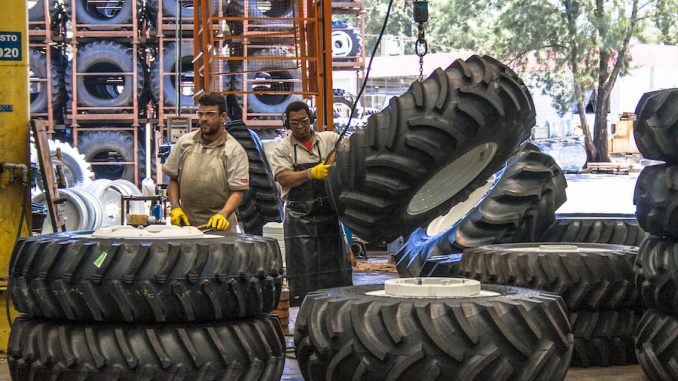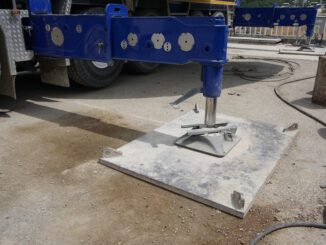
There are two main reasons to manage your construction company’s inventory: to know what you have on hand and to know what you need to order. Other reasons are related to equipment maintenance, project management, and worker safety. In this article we will talk about how an inventory management system (IMS) can improve your construction business.
What is Inventory?
May seem like a trivial question, but let’s define what specifically you might choose to include in an inventory management system for your construction company.
Equipment. Equipment could be as large as a crane or as small as a sealcoating machine. It also includes the parts and accessories needed to run the equipment.
Tools. Everything you use to get the job done from hammers to shovels to floats.
Materials. This can include drywall, nails, sealcoat, baseboard – whatever is needed to provide the products and services you sell.
Personal Protective Equipment (PPE). Most construction companies are responsible for providing PPE to their workers such as hard hats, N95 masks, and goggles.
A nail may only cost a few pennies, but over time you use – and lose – a lot of them. N95 masks are small, but pretty pricey. Some equipment can cost thousands of dollars to replace. A good inventory management system tracks the maintenance of equipment to extend their life.
What is Inventory Management?
Inventory management is controlling the type and amount of items you keep on hand in order to conduct business. For example, electricians need circuit breakers, wiring, and switches available for much of the work they perform. You don’t want them running out to the store every time they need an outlet cover. At the same time, you don’t want them keeping thousands of circuit breakers in their truck. So part of inventory management is knowing how much to keep on hand and when to order more. It’s also knowing when it’s time to repair or replace tools and equipment.
Inventory Strategies
There are generally two strategies for managing inventory: just-in-time (JIT) and materials requirement planning (MRP).
Just-In-Time (JIT)
The JIT inventory management strategy is where a construction company plans to have items arrive as they are needed. This requires having a flexible and dependable supply chain. It also requires excellent project management skills and processes. There is a certain amount of risk involved in JIT – it counts on being able to procure the equipment, materials, and tools that you need quickly when you win a bid or book a job.
Material Requirements Planning (MRP)
With the MRP inventory management strategy you procure equipment, materials, and tools based on sales forecasts. This strategy also has inherent risk as it counts on the use of historical data and analysis of the current construction environment to estimate the bids you are likely to win and the jobs you are likely to book within some time period – such as monthly, quarterly, or annually.
With either the JIT or MRP inventory management strategy, you are dependent on availability and how long it takes to receive the items you need. You can see where unforeseen events – like COVID – can have a major impact on supply chains.
![]()
Inventory Tracking Options
There are generally three ways to track your inventory: manual, periodic, and fully automated.
Manual
Unfortunately, this is the way many small construction businesses manage their inventory. They keep items on their truck and in their warehouse. Occasionally they count what they have on hand – or their workers let them know that they need certain items. They order them as needed. They track their inventory in a spreadsheet or handwritten log.
Periodic
In a periodic inventory tracking system, you count your inventory on hand at some regular interval – such as weekly or monthly. You update your spreadsheet or handwritten log with the new counts. This gives you greater accuracy because you are updating your inventory more regularly. It provides insight into what items you are using and what items you may be over ordering.
Fully Automated
Fully automated inventory tracking systems use barcodes or Radio Frequency Identification (RFID) to track the movement of inventory items. Active RFID systems have fixed tag readers that scan items as they move, say, around a warehouse. Passive RFID systems require barcodes or RFID tags to be scanned. The information in either an active or passive system is entered into an inventory management system automatically.
Think Big
If you are sole proprietorship with one worker (you) taking on small jobs – with no ambitions of growing your construction company – manual or periodic tracking of your inventory is likely manageable. We are guessing that many of you are looking to make it big in the construction industry. Manually managing your inventory will become unmanageable pretty quickly.
Inventory Management and Project Management
Successful project management depends in part on the availability of equipment, tools, and materials. It also depends on the right equipment, tools, and materials being available at the right location. Even small-to-medium construction companies are often working on jobs at multiple locations. They have multiple workers depleting inventory. Knowing what inventory is being used, where it’s being used, and when and how much to reorder can impact whether a project is completed on time and within budget.
Inventory Management and Worker Safety
Your inventory management system impacts worker safety in three ways:
- Ensuring you have the types and amounts of PPE on hand to keep your workers safe on the job.
- To ensure that tools are not used beyond their useful life. A worn out tool can be dangerous.
- To ensure that equipment is properly maintained. Old equipment in need of repair can be dangerous to operate.
The cost of equipment maintenance, tool replacement, and PPE gets expensive. But it will likely cost less than hiring a lawyer to handle a lawsuit. It will definitely cost less than losing said lawsuit.
View the complete article here.
What is the significance of using an Inventory Management System (IMS) for a construction business?
An IMS is crucial for tracking equipment, tools, materials, and ensuring their timely availability, maintenance, and replacement, contributing to efficient business operations, cost savings, and project management.
What are the main strategies for managing inventory in construction, and how do they differ?
Two primary inventory management strategies are Just-In-Time (JIT), focusing on timely procurement, and Material Requirements Planning (MRP), based on sales forecasts and historical data, each with its own considerations and risks.












































